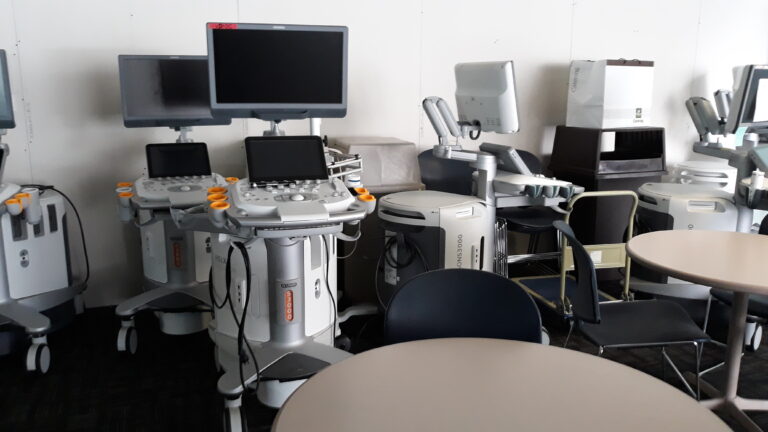August 9, 2022

August 9, 2022

The exact product development process for medical devices differs from region to region, with different regulatory expectations that need to be met in the EU, USA, UK and other regions. These precise regulatory requirements are overseen by the relevant regulatory body, such as the Food and Drug Administration (FDA) in the United States, the Medicines and Healthcare products Regulatory Agency (MHRA) in the UK or individual EU Member States that designate independent organizations, called notified bodies, to CE mark products for distribution and sale in the EU
Medical device development should be executed in a way to ensure all requirements are met for areas where the device is to be commercialized., Regardless of the region, there are some general steps in the medical device product development lifecycle that should always be followed.
In this article we cover the basic regulatory requirements that manufacturers of medical devices distributed in the United States must comply with.
The medical device development process depends on the device's classification. With that said, it's important to understand the different classifications and how medical devices are classified.
FDA classifications are based on the potential risk posed by a device. While the risk classification is normally determined when beginning the development process, it is possible that scientific data generated during development or discussions with the regulatory body may impact that initial assessment of how a medical device is classified so a classification can change during the development process.
Medical devices that are classified as Class 1 pose the least amount of risk to consumers. Examples of Class 1 devices include oxygen masks or surgical tools and are subject to "general controls" which ensure the safety and effectiveness of devices once they are manufactured.
General controls consider the following factors:
Class 2 devices pose more risk to consumers than do Class 1 devices. That being said, Class 2 devices are subject to the same general controls as Class I but meet also include special controls.
Special controls include:
Typically, Class 3 devices support or sustain life, are implanted in the body, or have the potential for unreasonable risk of illness or injury. Examples include pacemakers, breast implants, and HIV diagnostic tests. As a result, Class 3 devices require premarket approval. To receive this, a manufacturer must prove that a device is safe and effective. Class 3 devices are also subject to general controls.
The medical device development lifecycle involves a series of unique stages that must be followed to ensure appropriate design control is in place at the correct time in the development process. By implementing design control at the correct time in the development process, documentation will be available to show the device is both effective and safe to use without overburdening an organization with unnecessary documentation to early in the process
There are five stages involved in developing a medical device to qualify for the market. Many of these steps overlap as scientists invent, refine, and test the devices.
Typically, the development process begins when researchers see an unmet medical need. Based on the unmet need, a concept or an idea is created for a new device. From there, researchers build a "proof of concept," a document that outlines the steps needed to determine whether or not the concept is workable. Many times, concepts are not practical. The concepts that do show promise move to the later stages of development.
Researchers build a device prototype, or an early version of a medical device. At this stage, the device prototype is not for human use. Researchers test the prototypes in controlled laboratory settings. Refining the prototype provides researchers with important information about the product's potential use for people. The prototype process attempts to reduce risk of harm in people. However, it is almost never possible to eliminate risk entirely, but instead a risk management evaluation is performed.
The pathway to approval for a medical device depends on its risk classification as outlined above.
Because there is so much variation in the classification of devices, developers have a variety of options.
The most commonly used pathway to approval is the 501(k) route. However, there are a few other options you may want to consider, including:
Do you want to explore the seven major pathways that can be used to bring a medical device to market in the U.S. in much more detail? Read our blog post Pathways to Market for Medical Devices in the U.S.
If medical device developers have enough information on a device's safety and effectiveness, they can file an application to market the device to the public. The type of application they file depends on the device's risk classification. The device review is often preceded with meetings the manufacturer has with the FDA to ensure the correct application is selected and questions about data requirements can be asked prior to the actual review. This can avoid lengthy delays during the review process or a rejected application.
Humanitarian Use Devices benefit patients by treating or diagnosing a disease or condition that affects fewer than 4,000 people. Before they can market a Humanitarian Use Device, developers must submit a human device exemption and must demonstrate that there are no similar, legally approved devices on the market and that there is no other way to bring a Humanitarian Use Device to market.
Premarket Notification, also known as a 510(k), indicates that the Class 2 medical device is similar to others on the market. To support the claim, the developer compares the new device to one or more similar, legally marketed devices.
Premarket Approval applications must be submitted for Class 3 devices and must include data from all nonclinical studies and clinical studies. During the approval process, FDA will inspect the manufacturing laboratories and facilities where the device will be made to check for good manufacturing practices.
If appropriate, FDA will sometimes consult an Advisory Committee at a public meeting. FDA Advisory Committees consist of groups of experts who provide FDA with independent advice on an issue. The panels recommend whether a product should be approved or not based on an analysis of the risks and benefits of the product.
After the Advisory Committee meets, FDA decides whether the device is approvable or not approvable or request additional information. By law, FDA must publish its decision with all supporting evidence in the Federal Register.
Although premarket clinical trials provide important information on a device's safety and effectiveness, it is possible that new safety concerns will emerge once the device is on the market. As a result, FDA continues to monitor device performance after a device has been approved.
FDA officials conduct routine inspections of medical device manufacturing facilities across the United States. Manufacturers may be informed of inspections in advance, or the inspections may be unannounced. Inspections may be routine or caused by a particular problem. The purpose of these inspections is to make sure developers are following good manufacturing practices. FDA can shut down a manufacturing facility if standards are not met.
FDA has several programs that allow manufacturers, health professionals, and consumers to report problems associated with approved medical devices.
MedWatch, FDA's adverse event reporting program, is a gateway for reporting problems with medical products (drugs and devices) and learning about new safety information. You can subscribe to regular MedWatch safety alerts.
Medical Product Safety Network (MedSun), an adverse events reporting program, monitors the safety and effectiveness of medical devices. FDA recruits 350 health care providers throughout the United States to report any medical device problems that result in serious injury or death. Each month, FDA publishes the MedSun newsletter. The newsletter gives consumers important information about medical device safety.
Under the Sentinel Initiative, FDA is developing a new national system to spot possible safety issues more quickly. The system will use very large existing electronic health databases–like electronic health records systems, administrative and insurance claims databases, and registries–to keep an eye on the safety of approved medical products in real time. This tool will add to, but not replace, FDA's existing postmarket safety assessment tools.
Satisfying FDA safety requirements around drug development is a complex process that requires a deep understanding of regulatory guidelines and expectations. As a proven partner for drug manufacturers, ProPharma delivers the expert support and interpretation you need to move a new drug or compound through the regulatory process confidently.
If you'd like to find out how ProPharma can help you deliver products more quickly to the marketplace and maintain your products in the marketplace, please contact us today.
TAGS: PDP PMA EAP FDA CDE MHRA HDA EU USA UK Life Science Consulting

February 11, 2025
Congratulations! You have a lead candidate formulation for your new drug. You might be thinking to yourself, “okay, now what?” We all know the science and effort to get to this stage is significant....
February 12, 2019
On Tuesday, February 5th, FDA published a draft guidance explaining the principles for premarket review of combination products, including how to determine which type of premarket submission is...

October 22, 2018
On Friday, October 12th, FDA issued a guidance document entitled “Impact of Certain Provisions of the Revised Common Rule on FDA-Regulated Clinical Investigations.” The document aims to help...